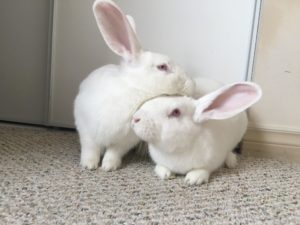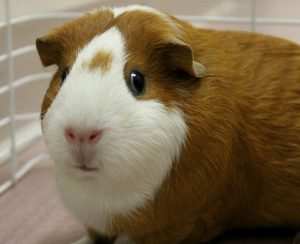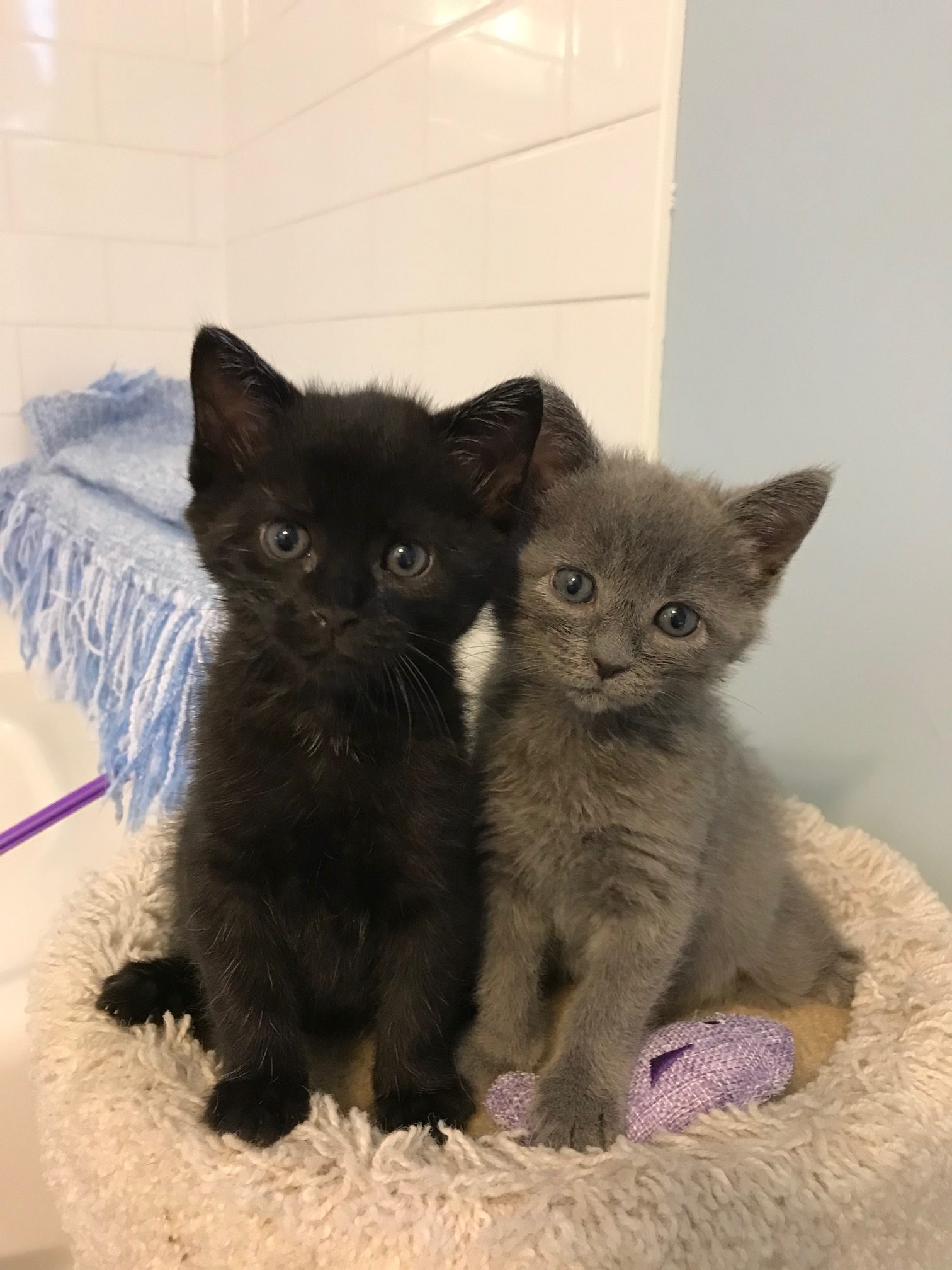We thank you for your interest in adopting and considering giving a pet in need a loving new home. Please find below our most frequently asked questions. However, if you have a specific question that is not on this page, please feel free to email our Adoptions Team at adoptions@guelphhumane.ca. We thank you and wish you luck in finding your very own #HappyTail!

General Adoption Inquiries
Why should I adopt?
With so many animals in need of loving homes, the adoption option has never been easier! In addition to giving an animal a second chance with a new family, it is a financial benefit for YOU to adopt! Did you know that on average, a “free” cat or dog will cost you anywhere from $580-$800 just in initial fees such as spaying/neutering, microchipping and initial vaccines? At Guelph Humane Society these services and procedures are included in the adoption fee, for only a fraction of the price! By adopting you also have the added benefit of having a support system in place that if you need any advice on your new family member, we are only a phone call away!
What is included in adoption fees?
- spay or neuter for all cats, dogs, and rabbits
- vaccinations for age and species appropriate/up to date
- rabies vaccine for all dogs and cats 4 months of age or older
- deworming
- flea treatment
- ear mite treatment (if needed)
- nail trim (if needed)
- microchip identification implant for dogs and cats
- Approximately 1-month supply of Royal Canin dog or cat food for eligible adopters (if available, excludes senior pets or pets on veterinary prescription diets
- 7-day home trial for dogs, cats and rabbits
How is the Adoption Criteria established for each pet?
In viewing the pets available for adoption on our website, you may have noticed that certain pets have specific adoption criteria (e.g., being the only pet in the home, mandatory training, mature homes only, etc.). This criteria is established in consultation with the previous owner (if the pet was surrendered), observations of the pet from our knowledgeable staff/foster parents, behavioural assessments utilized in our shelter, and sometimes with the input of a behaviour specialist or certified dog trainer. Many animals can feel scared or overwhelmed upon entering a new home. By establishing certain adoption criteria, we help ensure that the new pet has as smooth of a transition possible into their new home and to set them up for success!
What if the adoption doesn’t work out?
We know that no adopter wants to think about the possibility that their new pet may not adjust to their new home, or that they may need to return the pet to our shelter. While our Adoptions Team will disclose any known behaviour or medical concerns so the potential adopter can make a fully informed decision before adopting, regrettably, with many of our animals, parts of their history are unknown. All dogs, cats, and rabbits adopted from the GHS come with a one-week trial period. If in that one week it’s determined that unfortunately the pet and your home are not a suitable fit, we will happily accept the animal back to find it another loving home with any new valuable information you can provide, and provide a full refund (minus a $50 administration fee) on the adoption fee paid.

Dog Adoptions
What is mandatory training?
Some dog adoptions will have a mandatory training requirement, for example for puppies under the age of 6 months. We want you and your new dog to be set up for success and training is a great place to start. Training classes are great bonding experience between owners and dogs. In group classes, your new dog learns to focus on you in a high-distraction environment, having plenty of other dogs and people around. For dogs with behavioural concerns, talking to a trainer one on one is a great way to get some pointers and expert advice on how to help solve the problems and make your new dog more comfortable.
How do I choose a dog trainer?
The GHS supports a relationship built on trust and will only recommend certified dog trainers committed to the least intrusive, minimally aversive methods. GHS does not recommend dog trainers who recommend the use of physical punishment (e.g., prong collars), or methods that induce fear (e.g., “dominance theory”) to achieve the intended training results. If you are looking for a certified dog trainer in Ontario who utilizes positive methods, do not hesitate to contact us, as we have a list of recommended professionals we would be happy to provide!
Check out these helpful links!
https://avsab.org/wp-content/uploads/2018/03/How_to_Choose_a_Trainer_AVSAB.pdf
How do I work on behavioural techniques with my current or new dog?
Check out these helpful links on different behavioural techniques or feel free to email us at adoptions@guelphhumane.ca if you would like a list of certified positive dog trainers in Ontario!
Housetraining:
www.americanhumane.org/housetraining-puppies-dogs/
www.labradortraininghq.com/how-to-house-train-an-adult-dog
www.luckydoganimalrescue.org/housetraining-101
Barking:
www.aspca.org/barking
positively.com/barking
Chewing:
www.aspca.org/destructive-chewing
www.humanesociety.org/resources/stop-your-dogs-chewing
Separation anxiety:
www.aspca.org/separation-anxiety
www.whenhoundsfly.com/separation-anxiety-in-dog/
Resource Guarding:
www.aspca.org/pet-care/dog-care/common-dog-behavior-issues/food-guarding
https://positively.com/dog-behavior/aggression/resource-guarding/
How do I prepare to bring my new dog home?
Before bringing your new pet home, make sure you do lots of research on what they need.
To help GHS adopters, here is a starter list for what you will need to make your home comfortable for your new pet:
- A crate big enough for your dog to stand up, lie down, and turn around in comfortably
- Crate mat or bed
- Food and water dishes
- Collar/Harness and leash (Extendi-leads are not recommended)
- ID tag
- Stain and odour remover
- Poop pick-up bags
- Toys
- Training treats
- Shampoo, conditioner, and brushes
- Nail clippers
- Toothbrush and pet-safe toothpaste
Check out these helpful links for tips and tricks to help ease your dog into their new home:
www.whenhoundsfly.com/new-rescue-dog-tips
bestfriends.org/bringing-new-dog-home
How do I know if my current dog will get along with my newly adopted dog?
It is important to make sure you are taking the time to properly introduce two new dogs to each other. That’s why at GHS, if you are interested in adopting a dog and have a current canine companion at home, once you have submitted an adoption application we will arrange a date and time for you to bring your current dog to the shelter to meet your potential new dog. We will ensure experienced staff are available to supervise the interaction for safety, so we ask that you leave your pet(s) at home until you are advised to bring them in!
If all goes well and the “doggy date” is a success, we will discuss the next steps in the adoption process. When you’re bringing home a new dog it’s important to let the two dogs meet first in a fenced-in area outside (e.g. a backyard). Keep the leashes attached to both dogs in case you need to pull them apart, but it’s best to let the leashes go and drag on the ground, or have the leashes very loosely held so that there is some slack. A tight leash might increase the tension between the dogs.
After the dogs have spent some time together in the fenced in area, take them for a walk together. Walks are great bonding opportunities for dogs. Once you’re done your walk and before going into the house together, have one person stay with your current dog outside, while you go into the house with the new dog. Let him sniff around and get familiar before bringing in your current dog who’s waiting outside. This allows the new dog to explore the new environment in peace.
Check out these helpful links on how to set your new dog up for success in their new home!
positively.com/introducing-a-new-dog
www.patriciamcconnell.com/introducing-a-new-dog
How do I work on behavioural techniques with my current or new dog
Check out these helpful links on different behavioural techniques or feel free to email us at adoptions@guelphhumane.ca if you would like a list of certified positive dog trainers in Ontario!
Housetraining:
www.americanhumane.org/housetraining-puppies-dogs/
www.labradortraininghq.com/how-to-house-train-an-adult-dog
www.luckydoganimalrescue.org/housetraining-101
Barking:
www.aspca.org/barking
Chewing:
www.aspca.org/destructive-chewing
www.humanesociety.org/resources/stop-your-dogs-chewing
Separation anxiety:
www.aspca.org/separation-anxiety
www.whenhoundsfly.com/separation-anxiety-in-dog/
Resource Guarding:
www.aspca.org/pet-care/dog-care/common-dog-behavior-issues/food-guarding

Cat Adoptions
What are the problems associated with declawing cats?
Declawing is the surgical process of removing the posterior digit of the cat’s feet. This includes their nails and the last bone of each toe.
The Canadian Veterinary Medical Association (or CVMA) “views this surgery as unacceptable as it offers no advantage to the feline and the lack of scientific evidence leaves us unable to predict the likelihood of long-term behavioural and physical negative side effects”. Furthermore, the CVMA states that declawing can “causes avoidable short-term acute pain, and has the potential to cause chronic pain and negative long-term orthopedic consequences”
Problems that have been linked with declawing include:
- Litterbox avoidance
- Early onset of arthritis
- Depression
- Increased aggression and biting
- Chronic pain
- Back and hip problems due to them altering their stance (declawing forces them to put their weight on their feet in an unnatural way)
- The loss of their ability to fully stretch out their bodies
Alternatives to declawing include:
- Providing suitable scratching posts
- Trimming their nails
- Using soft paw applications
GHS is proud to offer Nail Trim Clinics and Soft-Paw applications! For more information on our Nail Trim Clinics, please click here!
How do I introduce my newly adopted cat to my current pets?
Most cats can and accept and co-exist with another feline in the home, however it’s important to properly introduce your new pets properly. This process can vary in time, but it is necessary to ensure the comfort of all pets in the home.
For detailed instructions on how to properly introduce cats to new pets, please visit these links:
ontariospca.ca/helping-your-adopted-cat-and-existing-pets-to-accept-each-other
https://resources.bestfriends.org/article/how-introduce-dog-cat
How to introduce two cats (spca.bc.ca)
Can I let my cat outdoors?
There are no by laws in Guelph regarding cats, meaning cats can be let out to roam at the owner’s discretion, however outdoor cats are exposed to many risks that indoor cats are not. Some of the risks include injuries due to cars or other animals and being exposed to a variety of parasites and diseases. Outdoor cats can also cause injury to local wildlife! The Guelph Humane Society is a proud participant of the “Cats & Birds” campaign. For more information please visit Cats and Birds!
What do the vaccinations the cats receive protect against?
The yearly vaccination and boosters protect the cat from the feline rhinotracheitis, calici and lanleukopenia viruses and aids in the reduction of disease due to Chlamydia psittaci.
What is FIV (feline immunodeficiency virus)? Are there any concerns?
FIV affected cats can appear normal for years, however, may have difficulties fighting off secondary infections. FIV cannot be transmitted to people, although it can be transmitted to other cats through deep bite wounds, or from an infected mother to her kittens. Generally, FIV+ cats that receive routine veterinary care, are kept strictly indoors, and have a consistent routine relatively free from stress can live just as long as cats without FIV, and they can still make amazing and devoted pets.
For more information visit:
How do you stop a cat from eliminating outside the litterbox?
Inappropriate elimination is the term used when the cat eliminates outside the litterbox and in inappropriate areas such as closets, beds, clothing or furniture. Inappropriate elimination can be caused by the litterbox itself, the litter, the environment, declawing status, the cats’ own stress or a medical issue. If your cat is experiencing inappropriate elimination, you can:
- Reach out to your veterinarian. Inappropriate elimination can sometimes be caused by urinary tract infections, or bladder and kidney stones or crystals that can be treated.
- Try changing the litter box type (e.g., covered to uncovered litterbox), location (e.g., from a busy area of the home to a calmer area), or litter used (e.g., scented to unscented, clumping to non-clumping).
- Try cleaning the litterbox more frequently
Try to decrease stressful environments, or give your cat time to adapt to sudden changes in the home (e.g., moving, new pet, etc.).
How do you prevent a cat from scratching furniture?
Scratching is a normal cat behaviour, which allows them to mark their territory and indulge in whole-body stretching. Scratching also helps with keeping nails in good condition.
To help your cat learn how to use the scratching post you can:
- Play with your cat on the post
- Put catnip on the post for your cat to enjoy
- If your cat is scratching where they shouldn’t, bring them to the scratching post. You can also use furniture-safe double-sided tape to discourage your cat from scratching furniture-
- Give lots of praise and treats when your cat uses the post!
How can I make vet trips easier for my cat?
Most cats are fearful of vet visits.
Here are some tips to help ease this scary trip:
- Have the cat accustomed to the carrier by leaving it out in the house, so it can be regularly used as a sleeping or hiding place, place toys or treats in the carrier, and use a soft familiar bedding in the carrier.
- You can try the pheromone spray Feliway, which helps comfort cats by mimicking facial pheromones, by spraying the carrier before travelling
- You can place a towel over the carrier in the car, to prevent the cat from seeing threatening stimuli or to help prevent nausea
- Make sure the carrier is secured, stable and kept horizontal in the car
Check out this helpful link for more information: Ten tips for taking your cat to the vet – Ontario SPCA and Humane Society
How do I prepare to bring my new pet home?
Before bringing your new pet home, make sure you do lots of research on what they need! In most instances, GHS will have cat and dog food for purchase, and a portion of food sales go back to the shelter. It’s a great way to give back and help other animals in need!
These items are important to have when bringing your new cat home:
- Cat Carrier (we will not send a cat/kitten home without one for safety!)
- Food and water bowls
- Litter box, cat litter, litter scooper & litter mat (optional)
- Cat Bed/Blankets
- Grooming Supplies (e.g., brush, nail clippers)
- Scratching posts/materials
- Toys
Check out these helpful links for tips and tricks to help ease your cat into the new home:
https://www.adoptapet.com/blog/help-my-new-cat-is-hiding-and-wont-come-out/
https://www.petfinder.com/cats/bringing-a-cat-home/bringing-home-new-cat/

Small Animal Adoptions
What are the benefits or reasons behind spaying/neutering rabbits?
GHS is proud to spay and neuter all adult rabbits before adopting them into new homes.
Spaying or neutering rabbits is beneficial for a number of reasons. This important surgery can help increase a rabbit’s lifespan and reduce the risk of developing reproductive cancers. Removing these hormones also means that your rabbit’s temperament will be calmer, making it easier to introduce to other rabbits in the home. A spayed or neutered rabbit is also easier to litter train!
How do you properly introduce rabbits?
Most rabbits can co-exist and potentially bond to another rabbit if the introduction is done properly! Properly introducing rabbits is a slow process and it is generally most successful if both rabbits are spayed/neutered. The good news is that GHS spays and neuters all adult rabbits before they go into loving homes. If you are hoping to bond your rabbits, give time for your new rabbit to settle into the new home first. Ensure you have all supplies needed for a second rabbit- such as another cage, a separate water bottle, a second hide hut, etc. Don’t place two new rabbits in the same cage right away- and don’t expect your rabbits to get along right away or to share. In some cases, bonding rabbits can take several months- but it is worth it!
Check out this video for more information!
Or these helpful links for more information on bonding rabbits!
https://rabbitrescue.ca/useful-info/bonding/
https://rabbit.org/faq-bonding-multiple-rabbits/
How much socialization do the small animals need?
Most commercial cages that are built for small animals are not sufficient for housing them long term. For rabbits who are incredibly social and intelligent, it’s recommended that new owner(s) invest in a playpen or dedicate a separate room so your rabbit can have lots of room to binky and interact with you. Some rabbit owners even let their rabbits have free-roam of the house like a dog or cat. Most rabbit enthusiasts will agree that you can never socialize a rabbit enough or give them too much time out of a cage.
For other pets such as guinea pigs, hamsters, budgies, etc, remember, you can never socialize a small animal enough! These small animals require at least 1-2 hours of out of cage time per day, with their owners. Remember, these animals are not able to stay in their cages all the time!
Is it possible to litter train a small animal?
It is possible to litter train some small animals, such as rabbits! It is much easier to litter train a spayed/neutered rabbit than it is one who is unaltered.
Check out this video for more information!
Or these helpful links for more information on litter training rabbits
http://rabbitrescue.ca/useful-info/litter-training/
https://rabbit.org/faq-litter-training-2/
While not impossible to train other small animals such as guinea pigs, hamsters, etc. it can be a challenge sometimes! For these pets the owner(s) need to be willing to frequently change their cage bedding to ensure they stay clean and healthy.
What do we need in our home for our new rabbit or other small animals?
Before bringing your new pet home, make sure you do lots of research on what they need!
Here is a starter list for what you will need:
- An appropriately sized cage for your new pet. For rabbits and guinea pigs, we recommend a large living area, such as a separate room gated area (e.g. a playpen). For hamsters and gerbils, many will recommend a 40-gallon tank at a minimum! Remember, the bigger, the better!
- Nutritious food, specialized for your pet. High-quality hay based pellets are the best for small animals with a primarily plant-based diet such as rabbits and guinea pigs. GHS generally feeds the Oxbow Brand of small animal food and recommends against feeding diets that have dehydrated fruit or seeds for guinea pigs and rabbits, as these diets are often high in sugar and fat.
- A water bottle or dish for your pet to drink out of.
- Bedding such as shredded paper, Care fresh paper bedding or fleece blankets.
- If your pet requires hay in their diet, such as rabbits and guinea pigs, high quality timothy hay is best!
- Positive chew toys, such as wooden chews to allow your small pet to wear their teeth down!
- A hiding space to allow for your new pets’ comfort
I think my small animal is sick, what should I do?
Just like any other pet, small animals require veterinary care too! Rabbits and Guinea Pigs are prone to teeth issues, cancers, as well as gastrointestinal issues. Not all veterinary clinics have staff that are familiar with, or comfortable with diagnosing and treating small animals. We recommend prior to adopting a small animal, to research into the special medical needs of the pet you are looking to adopt and to call veterinary clinics in advance to ensure they can provide care if your new pet should need it in the future!

